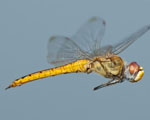|
News From The Jungle |

|
|
Tiger count
up in Sunderbans,
latest survey
puts total at
over 85 |
| |
|
| |
The number
of big cats
in the
Indian
Sunderbans
is healthy
and rising.
A recent
camera-trap
exercise has
spotted at
least 9 more
tigers over
last year's
figures in
the entire
mangroves,
including
the tiger
reserve area
and the
South
24-Parganas
forest
division.
The
assessment
exercise by
the ministry
of
environment
and forests
(MoEF) and
Wildlife
Institute of
India (WII)
had in 2015
put the
total tiger
count in the
Sunderbans
at 76. This
year, state
foresters
have put the
number at
more than 85
on the basis
of
camera-trap
images, but
claim the
number could
be more
since it is
not possible
to
photograph
all the big
cats using
camera
traps.
This
development,
along with
the recent
sightings of
otters,
indicate a
revival of
health of
the
Sunderbans,
the world's
largest
mangrove
forest
spanning two
countries.
This is the
first time
that the
camera-trap
exercise
covered the
entire
Indian side
of
Sunderbans —
the tiger
reserve area
and the
forests
outside. The
exercise was
completed
jointly by
WWF India
and the
state forest
department.
While chief
wildlife
warden
Pradeep Vyas
refused to
divulge
details and
restricted
himself to
saying that
a "report
had been
prepared and
would be
submitted
next week",
sources in
the know
claimed that
at least 25
tigers,
including a
cub, were
found
outside the
reserve area
or the South
24-Parganas
forest
division.
The
remaining 60
were spotted
inside the
tiger
reserve
area.
The
camera-trap
images were
analysed
with the
help of a
special
software
that matched
the stripe
patterns of
the big cats
to arrive at
a figure of
85, the
sources
explained.
The same
exercise
last year
had
projected
the cat
population
in the
mangroves at
76. |

|
|
The Globe
Skimmer &
Jacobin Cuckoo
Migration |
| |
|
| |
This is the
largest
insect
migration in
the world,
yet we know
for a fact
that there
are not many
who have
heard about
it. I’m sure
many of you
have seen a
dragonfly -
small aren’t
they? But
did you know
that there
is a
dragonfly
species that
migrate all
the way from
Africa to
India and
back. This
is a 11,000
– 14,000
miles or
17700 –
20,000 km
long
round-trip
migration
over the
Indian
Ocean. This
is the
migration is
of the Globe
Skimmer
dragonfly.
It includes
a visit to
Seychelles
and Maldives
on route and
back from
India.
So each year
in October
you will
find
millions of
these in
Maldives and
from April
to August
they can be
found in
Peninsular &
Southern
India before
they start
their
journey back
to East
Africa. What
is
interesting
is that it
takes four
generations
to make the
full round
trip each
year. What
makes this
physically
possible is
the ability
of this
dragonfly to
fly at high
altitudes
(6300m above
sea level)
on monsoon
winds that
carry them
across with
tail winds
often
reaching as
high as 10m
per second.
What is even
more
interesting
is that the
Jacobin
Cuckoo or
the Pied
Cuckoo also
follows this
great
migration.
This
migration of
course is a
result of
the
dragonfly
migration as
they follow
this food
source
across the
Indian
Ocean. The
pied cuckoo
in India for
a long time
has been
considered a
harbinger of
the monsoons
and very
much the
part of
folklore and
poetry where
it is
referred to
as ‘Chatak’
– one who
live on
drops of
rain. |
|
|